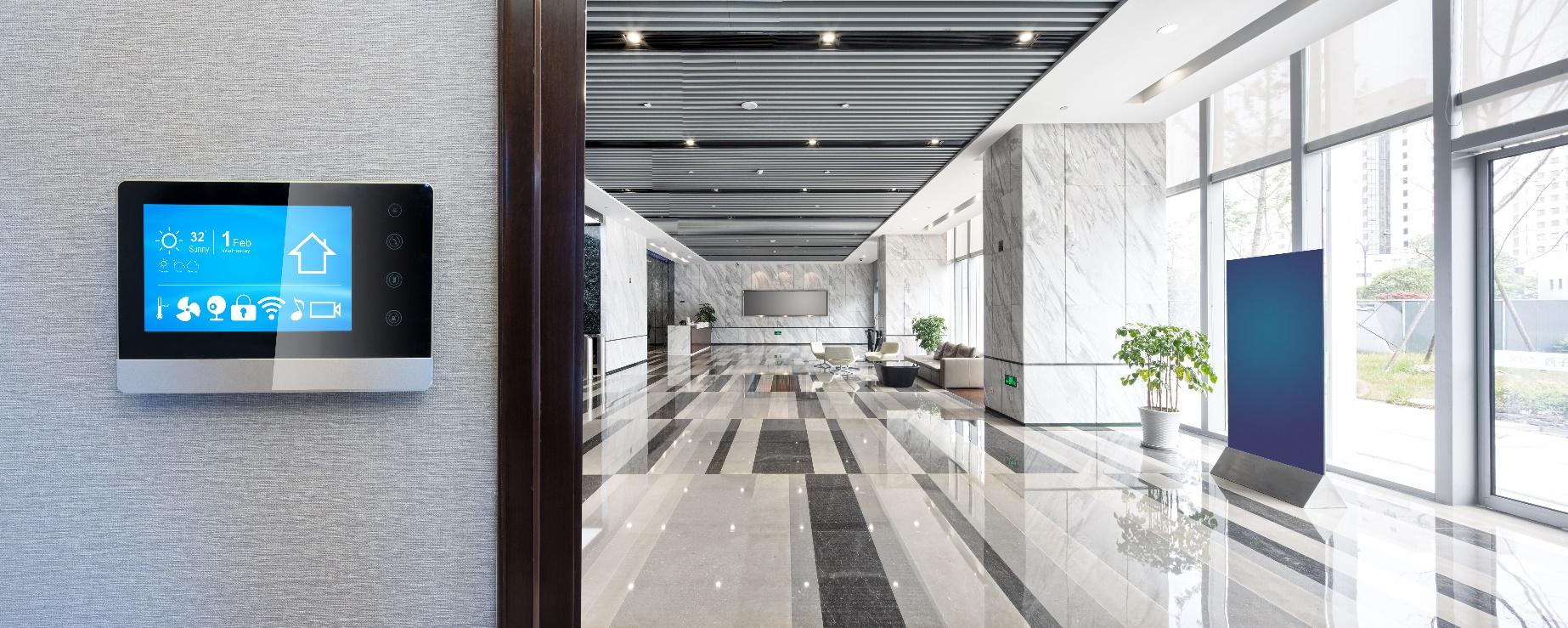It’s time for businesses to go green. It isn’t just an environmental responsibility; it’s a financial one. Consumers are choosing to use sustainable brands. They’re searching for them online, according to the Economist Intelligence Unit, which found online searches for sustainable goods increasing by 71% between 2016 and 2021. Concerns over ethics or sustainability can also drive consumers away from specific brands or products.
Environmentally friendly business decisions and technologies can help reduce your environmental footprint while boosting your bottom line. Here are five strategies that organizations are using to reduce waste, save energy and connect with consumers
1. Using smart technologies in the office
Have you ever battled colleagues over the thermostat or found the lights left on in conference rooms over the weekend? Smart technologies are making those challenges a thing of the past. Automated thermostats can keep temperatures at a steady burn while businesses are occupied and then drop the temperature when no one is in the office. Sensors can detect motion and turn lights on only when people are moving around the office.
Tiny devices like these can have a big environmental impact. The World Green Building Council says that building operations account for 28% of global greenhouse gas emissions. Connected smart building technology is set to substantially save on electrical costs, according to analyst company 6GWorld. Its report predicts around 130 Terawatt-hours (TWh) of electricity savings from IoT-enabled enterprise HVAC and building automation systems by 2030.
2. Shifting to digital signage
A shift to new technology has changed the way businesses think about signage. Digital signage keeps organizations dynamic by enabling them to update fast-changing information on vibrant displays. Research and Markets predicts an annual growth rate of 6.3% for the digital signage market in the US. It explains that backlit LED screens are creating substantial energy savings in digital signage, encouraging more enterprises to adopt them.
One of the most flexible options is projection. From brand-level signage to product and creative campaigns, projectors allow you to continually evolve your in-store signage and branding in an efficient way by reducing paper usage.
3. Being aware of energy vampires
It’s not always the big appliances that drive your energy usage. Much of the energy used today is from so-called energy vampires that sip power slowly and steadily. The computer left on over the weekend, the water cooler humming away when no one is in the office, or the display screen that’s perpetually on fall into this category.
Setting devices like these on a timer helps to minimize this vampire energy draw. Smart power strips that turn off when the devices plugged in aren’t being used can also help. Finally, don’t underestimate the power of a good training program. Reminding your team to turn things off when they’re not in the office or to use power-saving modes can have a positive impact on energy use.
4. Looking at procurement policies
The way your business handles its buying and disposal policies can have a significant impact on both your footprint and your profits. Does your company look at the entire product lifecycle, including both green procurement and environmentally friendly disposal?
Regularly upgrading your equipment helps keep your company current. Have a strategy that helps repurpose older furniture or computers your company is getting rid of. The EPA says that the US sends 9.68 billion tons of furniture to landfill each year, representing 80% of all furniture generated. Last year, the world generated 54.7m tonnes of electronic waste. Reselling or donating your equipment can benefit others while keeping material in the economy for as long as possible. When you do finally come to recycle equipment, use a program that does it responsibly. Many cities and states run programs to help local businesses with this.
5. Evaluating business processes for environmental opportunities
Increasingly, companies are analyzing their business processes to save money and cut down their environmental impact. Consider how tools such as projectors can be used during company training sessions, creating immersive environments and reducing printing needs. Tools such as video conferencing and collaborative software help limit company-related travel while keeping business moving forward. The biggest impact for growing organizations comes from looking at the way processes are engineered and decisions are made. Is there an environmentally savvy alternative to your current approach?
Organizations are finding that being environmentally conscious isn’t just good for the planet — it’s helping attract customers who want to do business with companies stewarding the environment. On another level, by saving money, reducing wastes, and finding smart alternatives to expensive equipment, businesses can increase their profits to reinvest back into their companies in meaningful ways.
